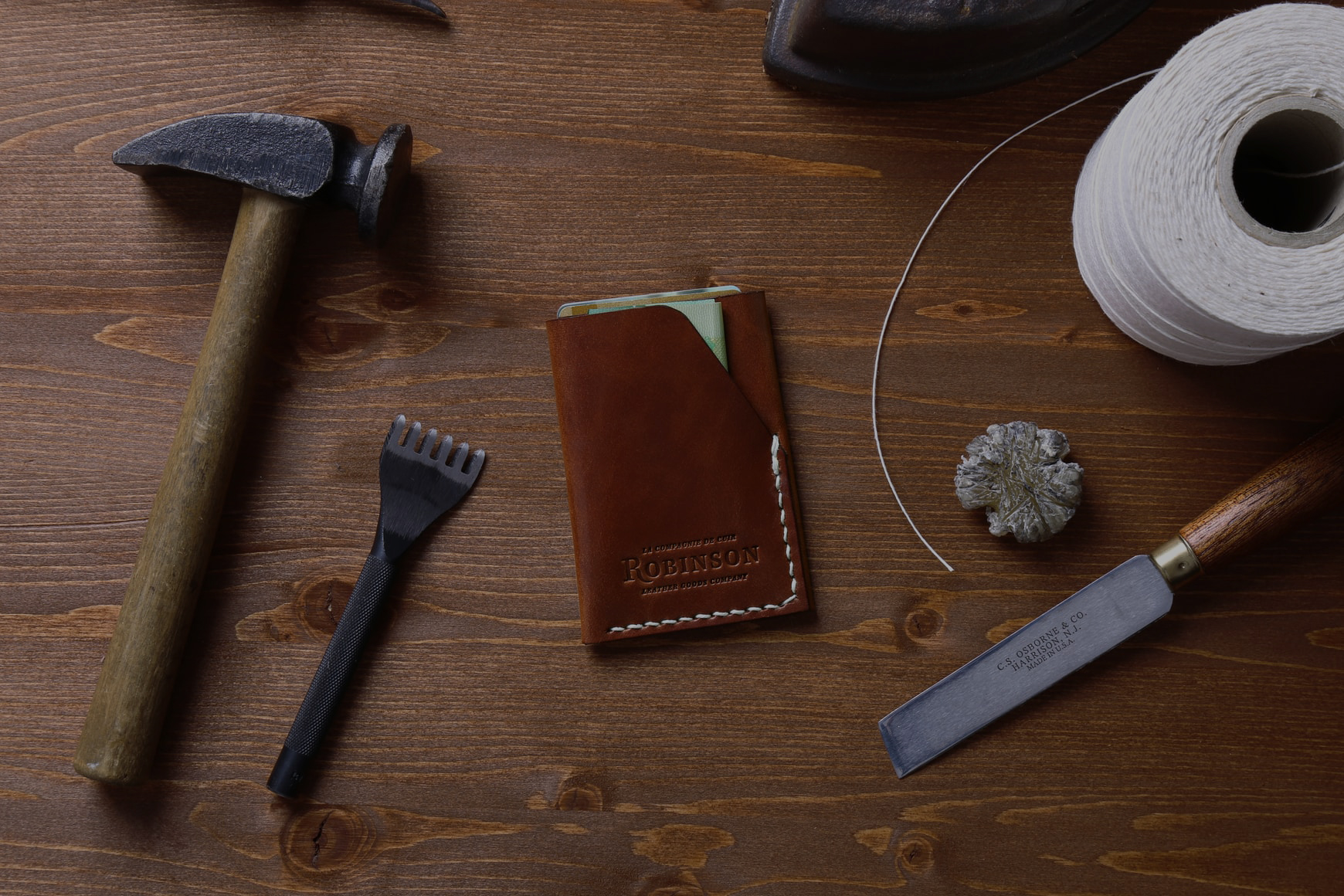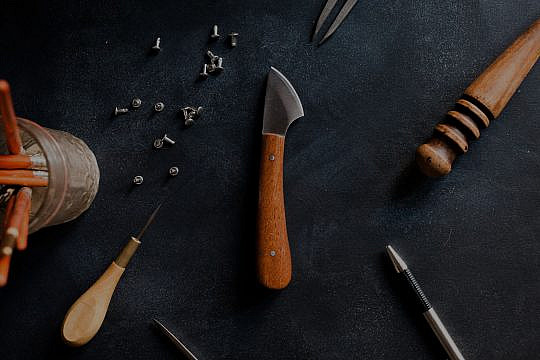We take a look at some traditional techniques used in the manufacturing of leather goods.
Stitching
Saddle stitching is one of the most durable techniques, and one of the most aesthetically pleasing. And it has to be done by hand. The reason it is so strong is that each stitch is actually made of two separate stitches, and each one is independent of the rest. Even if a stitch breaks, the whole line of sewing won’t unravel, unlike some other techniques, and the closest version a sewing machine is capable of.
This type of stitch is done with a single piece of thread with a needle at each end. The first stage is to punch holes in the leather for the stitches to pass through. If you can’t clamp the leather it helps to glue together the pieces you want to attach so the holes are correctly aligned.
For the first stitch you must pull half of the length of thread you are using through the first hole. Then, working towards your body, take the left-hand needle and push it through the next hole. The right-hand needle needs to stay behind the left-hand one as you push it through. Then the right-hand needle must be passed through the same hole, behind the first stitch. Now pull both ends so the stitch is tight, making sure both ends of the thread are of equal length. This must now be repeated until all the holes you have punched have been used. To finish the job, simply back stitch for a couple of holes, repeating the process in reverse, and trim the thread.
Braiding
Braiding leather is very similar to braiding hair, and techniques can vary from a simple plait to much more complex effects.
The simplest technique is to take a long strip of leather and cut it into three thinner strips, making sure you don’t cut the full length, so the three strips remain attached at one end. Then simply braid like hair – take the left-hand strip and pass it over the middle one. Then do the same with the right-hand strip and repeat until the whole length of the strips is used. Remember the length of the braided leather will be shorter than the original length of the strips, so take that into account when you are working out how long you want the braid to be. When you have finished, tie the end of the braid neatly with thread to prevent it unravelling.
A more complex technique, still with three strips, involves leaving them attached at both ends. This is done by cutting slits in the leather and means you don’t have to secure the end when it is finished.
The braiding is done by taking one of the bottom corners of the strip, passing it through the slit furthest away from it. Repeat this action until the length is braided. After each step, untwist the leather so it lies flat – when finished, the leather can be manipulated so each plait is even.
Lacing
Lacing is a great way to join two pieces of leather, making a nice feature of the design. It is similar to sewing, but is usually done with leather thongs. It works well with thicker leather. As with the saddle stitch, you should punch holes in the leather first. The thong should be threaded onto a large needle.
There are a variety of stitches that can be used. In the most common, when the needle is passed through each hole, it then passes through a small slit which you make in the thong itself, securing the lace to itself with each stitch. Once all the stitches are made, the lace can be pulled back neatly through two or three of the preceding stitches, leaving it nice and secure.








